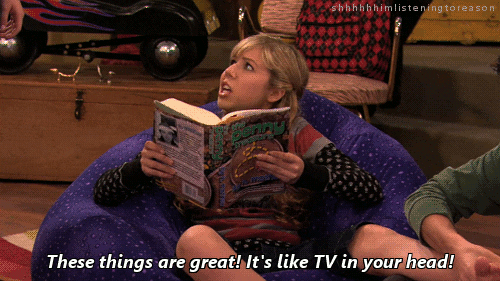
Look around your home and classroom.
You''ll see things like:
📚 Books
📖 Magazines
🗞️ Newspapers
Can you imagine a time when they didn't exist?

What Do Monks And The Game Of Telephone Have In Common?
Until the mid-1400s, it was extremely difficult for people to share and access information.
Let's say you wanted to:
Tell everyone in your village about an important upcoming meeting
Learn a new skill like archery
Learn about the history of your people
Warn people that a war had begun
Send good news to your family members who lived in another town
Without printed materials, you had to count on:
Messengers
Messengers traveled on horseback or by foot. They often faced dangerous traveling conditions and delivery could take many weeks.
A Town Crier
It was someone's job to clang a bell and walk through the streets shouting out news and official announcements.
Signals
Smoke signals, drums, and whistles provided warnings, but could be easily confused.
Monks
Monks spent months or years hand-writing documents like pamphlets or books. Only the wealthy could afford these materials, and they couldn't be mass-produced.
Word of Mouth
News, stories, and family history had to be communicated verbally from person to person.
Observation
All teaching and training happened in-person. If you wanted to learn a new skill, you had to observe someone doing it.
The Gutenberg Press
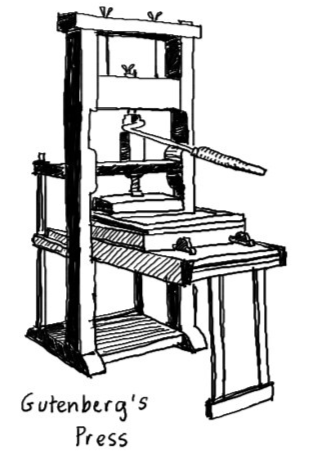 Image from Creative Commons
Image from Creative Commons
Huge changes happened in Renaissance Europe in 1440 when Johannes Gutenberg invented a mechanical printing press.
Gutenberg made individual letters out of metal, put ink on them, and placed them inside trays to form words and sentences.
Then a sheet of paper was pushed firmly onto the tray by the press, transferring the writing onto the paper.
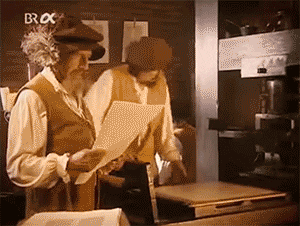
Books and other printed materials could finally be mass-produced!
Impact
The mass production of printed materials allowed for the spread of ideas and information like never before.
It's one of the most important inventions in history because it gave people new knowledge!

The printing press meant:
Ideas and information could spread to EVERYONE, not just the privileged.
Pamphlets, news, and bookscould be distributed worldwide.
Scientists could publish and share their findings, powering the Scientific Revolution.
Common people had a voice to express their thoughts, not just popes, kings, and queens.
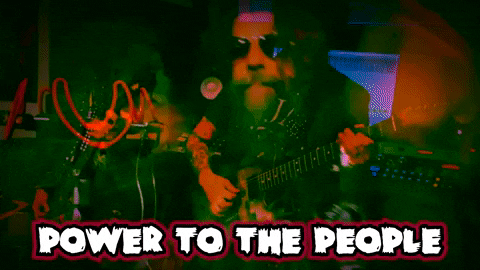
Quiz
Take a guess: what era followed the invention of the printing press and the Scientific Revolution?
Changes Over Time
The printing press improved over the centuries.
You've probably seen movies showing print shops rolling out thousands of newspapers in a single day to keep everyone informed of daily news and major events.
Textbooks, children's books, magazines, comics, and novels became important to everyday life and education.
But Has It Impacted Me In The 21st Century?

We're now in the Information Age!
Mass media — different types of communication that reach large amounts of people in a short amount of time — are part of our everyday society in the 21st Century.
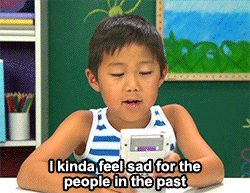
Modern technology all began with the printing press:
Computers & smartphones
Social media
3D printing & animation
Remote learning
These technologies allow for information to spread much more quickly and easily than even 25 years ago. Communication technology today can reach:
People in developing nations or areas where information may be restricted
People who otherwise might not be able to get an education
At-home learners
Anyone around the world! 🌎
Take Action
The printing press changed history!
As new technologies developed, every person, regardless of social status, has the opportunity to learn more about the world.
Want to learn more?
Your feedback matters to us.
This Byte helped me better understand the topic.


